10 Popular Prints That Are Face of Indian Dresses
Our country is always associated with rich weaves, unique handlooms, great texture and a unique palette of colours used on a thousand different prints. The fabrics that we use in the loom are special because the prints that we incorporate are influenced by nature, flora and fauna, architecture, temples in rich vibrant shades speaking a thousand words to the believer. These prints are an integral part of Indian clothing. And the weavers, craftsmen are spread across thousands of acres of land and their prints are worth mentioning in a blog like today. Some of the popular prints are:
Bandhani
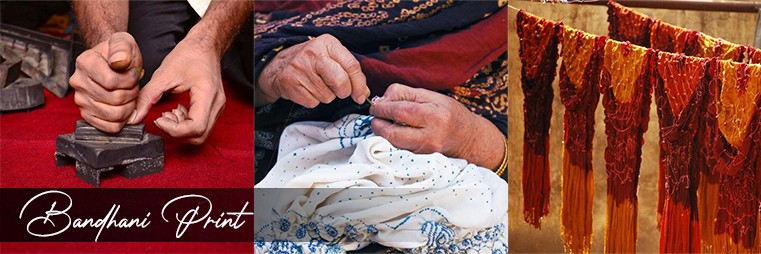
It is one of the most recognizable Indian prints, being around since the time of the Indus Valley Civilization. The term bandhani is taken from the Sanskrit word ‘Bandha’ which means ‘to tie’. The textile is decorated by plucking the cloth with the fingernails into many tiny bindings to form a figurative design. It is available in dots, stripes, waves, and squares which are created by tying small sections of the fabric at intervals with continuous thread to create intriguing patterns, then dying it.
Batik
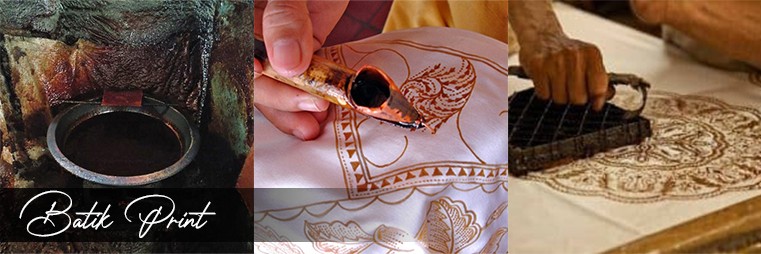
This design is an ancient tie and dye technique that has been around for over 2000 years. Its name is derived from the Javanese words amba ('to write') and titik ('dot'). It's similar to tie and dye, but instead of tying up the fabric, it employs wax resist to create beautiful patterns on cloth. Floral designs and an earthy palette, with the occasional splash of brilliant colour, are popular in batik.
Ikath
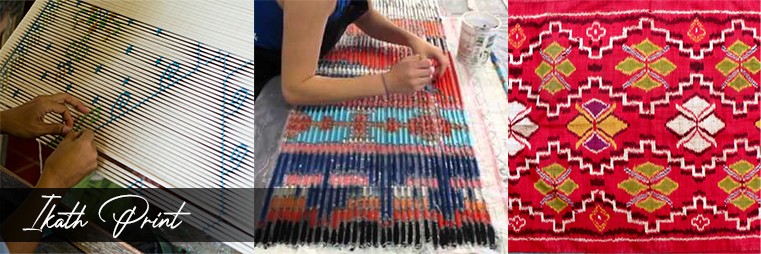
This is a dyeing process rather than a print or pattern, and it is one of the oldest kinds of textile design. This technique weaves a pattern or design using either the warp or the weft. Double Ikat is when both the warp and the weft are tie-dyed. Individual strands or bundles of yarn are tightly wrapped in the desired design before being dyed to create the desired pattern. Ikat is known for its blurriness, which is due to the craftsman's extraordinary talent inlining the threads in place. The less hazy it is, the more time, work, and talent that went into it, and the higher the price. Gujarat and Telangana are particularly known for their ikat.
Ajrakh
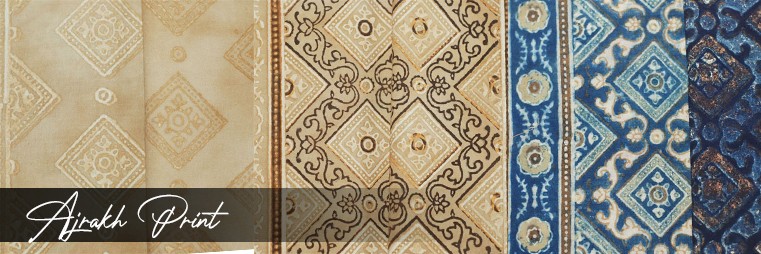
It is a distinctive type of block print that is prevalent in Sindh, Pakistan, Kutch, Gujarat, and Barmer, Rajasthan, India and is usually found on shawls and carpets. These prints feature designs and patterns created with stamps and block printing. Blue, red, black, yellow, and green are common colours used to create these designs. The colour pallet, however, is not limited to these hues alone. Indigo is the main dye in Ajrakh printing, which uses natural colours that comprise both vegetable and mineral pigments.
Kalamkari
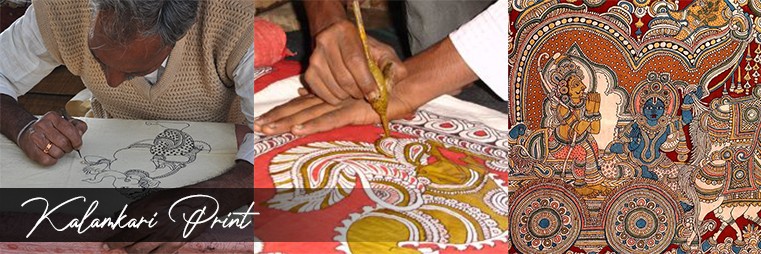
It is the art of using a pen to draw. Because it uses natural colours derived from natural extracts, it has a unique value when used in Indian dresses. Today's art includes freehand abstracts and delicate flower and animal prints, which are meticulously crafted by artisans over months. Kalamkari, one of the most awe-inspiring fabric prints, is well worth the money.
Patola
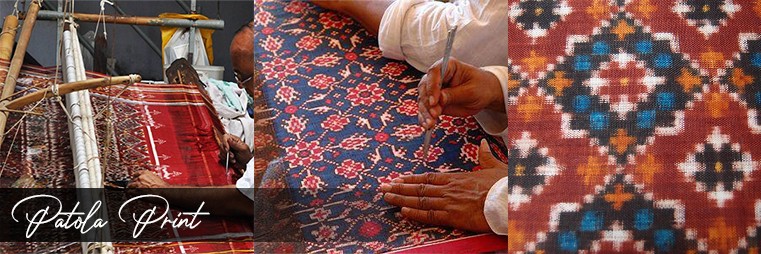
This is a double ikat weaving that is made in silk or cotton fabric and is prevalent in the Patan region of Gujrat. Because each thread is individually dyed and put to produce a specific pattern, this is one of the most expensive prints ever discovered. This art form, which dates back to the Solanki Rajput dynasty and served as a status symbol for Gujrati women, is now endangered due to a lack of personnel. The Patola's best features came from each community's unique design. Abstract designs were selected by Jains, Ismaili Shia Muslims chose the Vohra Gaji Bhaat, and Gujarati Hindu women preferred the elephant, flower, girl, parrot, and paan designs.
Varak gold and silver leaf printing
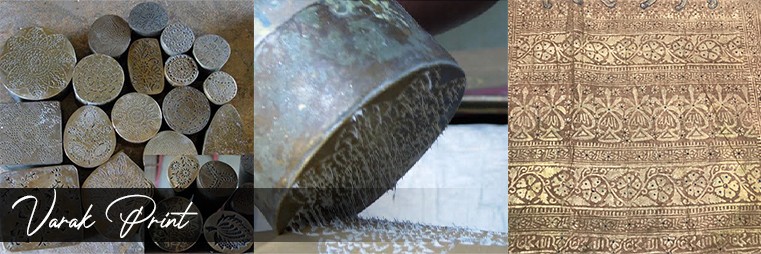
It's also called "chand ki chhapai," and it's a delicate way to adorn clothing by flattening gold or silver on a thin piece of paper. These thin sheets are used to embellish delicacies and were manually printed into flags, royal tents, and other power emblems in ancient times. These gold and silver designs may be found on expensive chanderi silk and cotton sarees.
Dabu Print
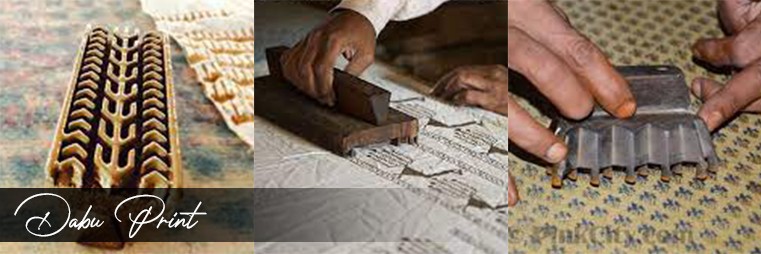
This is a mud resist printing process in which a thick mud paste made of calcium hydroxide (chuna in Hindi) and naturally pounded wheat chaff (beedan in Hindi) is applied to a fabric that has been set out flat or on a running table, and block prints are applied. The name of this print comes from the Hindi word dabana. The material is then properly washed to remove the muck and reveal the lovely designs below. This tribal community (Deesa) is known for weaving brilliant fabrics into stunning ghagra cholis and colorful turbans.
Bagru Print
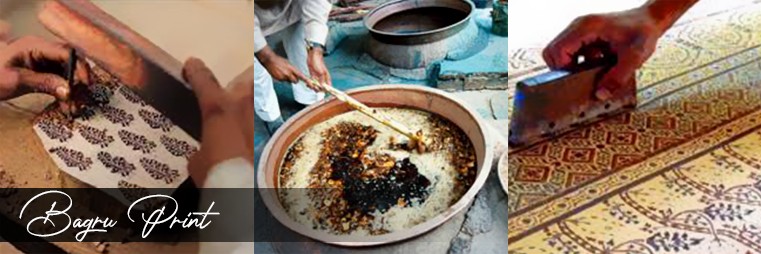
Creating wash-resistant prints is a time-consuming process. Skilled craftsmen have dedicated themselves to the profession for more than 30 years. The dye, the block printing, and the bagru block printing are all organic.
Gold and silver Khari
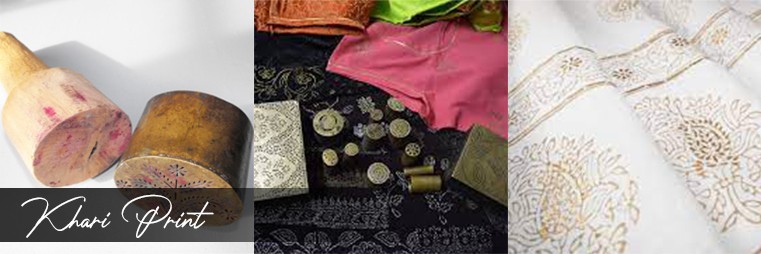
During weddings and festivities, every piece of clothing was dusted and printed with gold and silver Khari print. They do, however, now use less expensive metals. Unlike other printing techniques, the block system is a surface ornament that does not permeate the fabrics. The block print is unique, with two blocks: an exterior one made of brass and an interior one made of wood that fits snugly into the brass sleeve. It is also practiced on paper as a result of its huge success.
Latest Posts
Categories
Tags


 +1-403-351-7777
+1-403-351-7777














